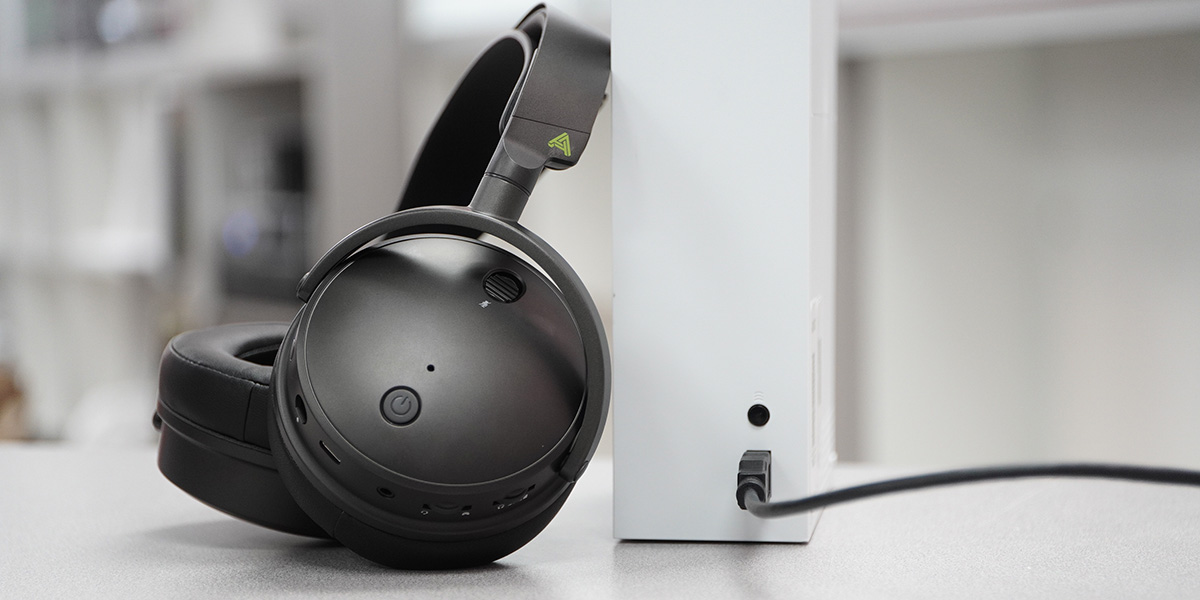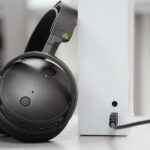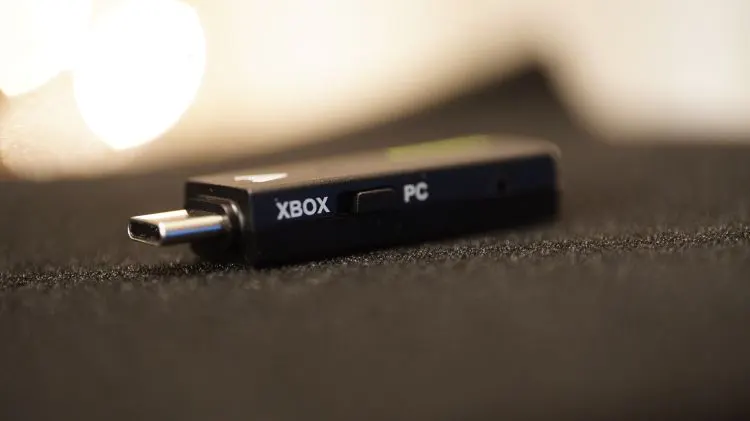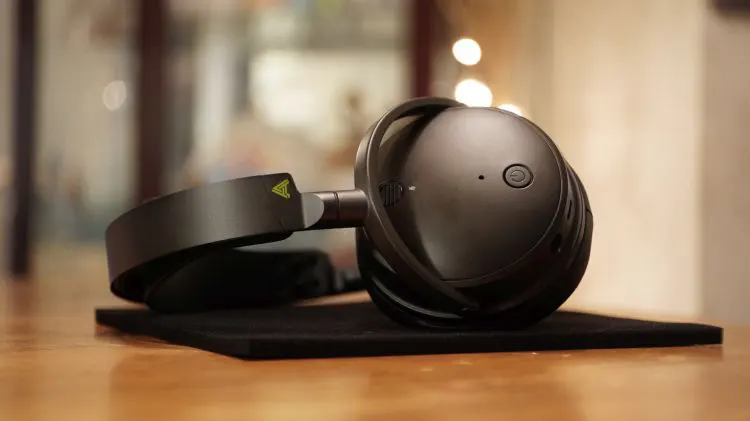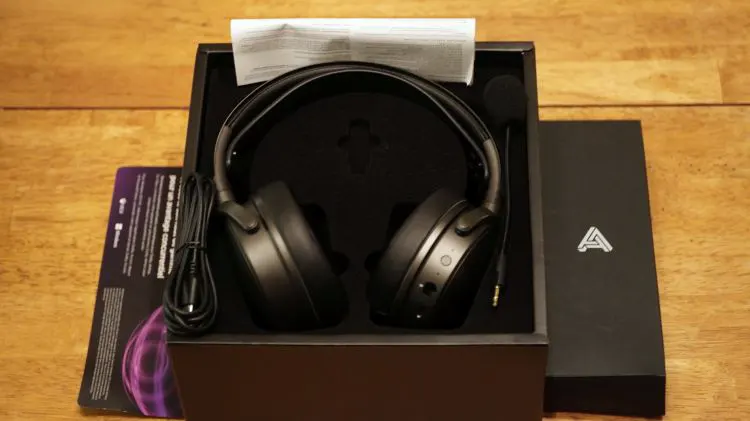Today, we review the Audeze Maxwell, which is a closed-back 90mm planar driver headphone engineered for ultra-low latency wireless gaming. It is priced at $299 SRP.
Disclaimer: This is a sample sent to us in exchange for our honest opinion. Headfonics is an independent website with no affiliate links or services We thank the team at Audeze for giving us their support.
To read more about the Audeze products we have previously covered on Headfonics click here.
Note, that this review follows our current scoring guidelines which you can read up on here.
Gamers aren’t that hard to please. Let’s be real, most gamers have no idea that much better options exist out there that aren’t branded as “Gamer” headphones.
Audiophile companies dish out a few models here and there that are aimed at the gaming universe, and all of them end up sounding pretty good. Yet, the typical gamer headphone rules the PC and the Xbox/PlayStation generation.
Audeze has every one of those gamers in their sights first with the Mobius and now with the Maxwell. Those with a red dot attachment, complete with a noob-tube backup and the ‘Ninja Perk’ active. Time for a nuke? Yep.
Camp that room at the top of the stairs on the Estate map, all of you old-school MW2’ers know what’s up there, everyone else won’t even have a chance, you’ll hear them coming from a mile away.
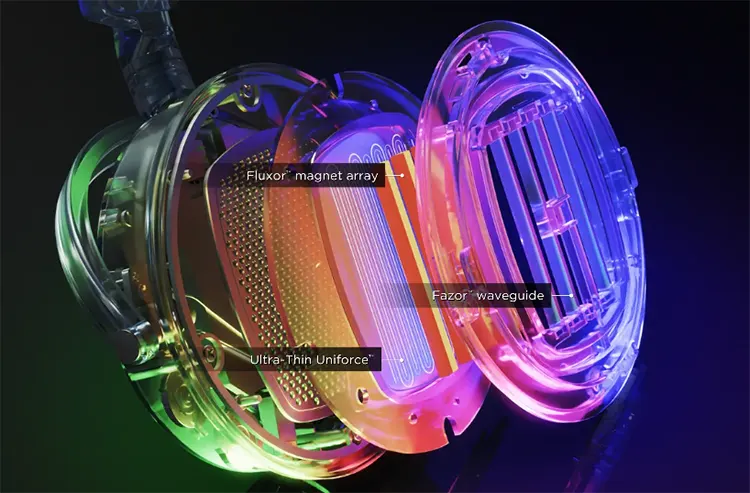
Tech Highlights
The Audeze Maxwell closed-back planar headphones come in two variants: The PlayStation or the Xbox model. I have the Xbox model, which comes with a Bluetooth dongle that is PC Windows compatible.
Driver
Audeze has a bunch of patents on their technology that reinforces each area of these planar drivers. Uniforce voice coils, Fluxor magnets, Fazor waveguides. Audeze makes these headphones theirs in every avenue possible.
The drivers are massive at 90mm. So yes, these headphones are large and heavy. Beastly, even. The closed-back designs offer nice passive noise cancelation properties.
In fact, a quick perusing through my closed inventory and this Maxwell offers the best passive noise cancelation that I’ve yet heard, likely due to the dual chamber wall design of the interior of the earcups. The more walls, the better.
Internal DAC
The Maxwell has an internal DAC that handles up to 24bit/96kHz bitrate and is Dolby Atmos friendly with the Xbox variant only. Meaning, if you are running 4K content with your audio needs, you can also experience the equivalent hi-def audio stream that comes with it.
Bluetooth
The module on the inside of the unit is Bluetooth 5.3 and supports LE Audio, LC3 Audio, and LDAC. These are just variations of wireless communication between your source and the headphone. Typically, LDAC is what will be connected with if you pair with a phone or a laptop.
Design
The Maxwell is planar magnetic in driver type, so expect a heavy experience on the head with a 90mm beast of a driver on each side of your noggin’ that weighs a total of 490g. The closed-back design is fully closed, without any vented ports. The cups are large, and the headband is made of spring steel.
On the exterior left cup, a power button at the base side. Long pressing it turns the unit on and powers up. After that, a double tap will enable wireless Bluetooth pairing mode. Above at the top of the cup, a microphone disables and enables the mute switch, which is great for fast “Please, stop talking to me while I am on voice cha-type moments”
Below is a mode selector button, a boom mic input for external microphones, a dial that toggles volume intake, as well as a microphone output. Lastly, a 3.5mm standard cable entry. The right side cup is free of any buttons or dials.
Pads & Cable
The earpads are extremely soft leather and score high on the comfort rating. Being closed back, the headphone does get warm after a good half an hour, but that’s normal for a headphone of this type of design.
The pads though, are of a higher quality than 99.9% of gaming headphones out there. No junk here, this is the good stuff.
The stock 3.5mm cable is just fine, I don’t see anything special about it or anything lacking. It is just a normal 3.5mm in every way with standard termination quality and no microphonics issues. I prefer fabric cable sleeves, but it doesn’t matter. The odds are good you won’t ever use the 3.5mm option anyway.
Comfort
We have to talk about how heavy these are and if that matters to gamers who game for half the day. Can I wear them that long? No, I cannot. 490g is fairly heavy.
In the case of excellent metal build top to bottom, the Maxwell might have been more well suited to be half metal, half plastic, to reduce the excessive weight.
I don’t think we need a huge cut of metal for the headband unless you want to toss your headphones against the wall when someone is using an aimbot on your server. I see the excellent headband and solid metal frame as a detriment to the experience that could be cut down on weight with a different material.
There are some questionable design choices but at least they look great from a visual point of view. But is it comfy? Yes, the clamp pressure is fine, and the pads are lovely, so the experience is good for a time until you start to feel weight fatigue. Otherwise, the comfort is good.
Packaging & Accessories
The Audeze box is gorgeous! No carrying case but included in the box is a detachable small boom mouth mic, a USB dongle, a USB C to C charging cable that will supply this model with an absurd 80 hours of battery life, a good 3.5mm to 3.5mm cable, and some paperwork.
The internal battery of the Maxwell is 1800maH and allows for a 20-minute fast charging experience that can get you up to 25% full at 1.8amp (max). Thankfully, the cable they include is fully compatible with that fast charge potential.
The wireless adapters are different depending on which gaming console you have, and they are not going to work with each other, so make sure you buy the right one for the console you have.
Sound Impressions
Bass
I would define the stock tuning bass quantity on the Maxwell as more on the tight and neutral side. However, with some boosting and the Audeze HQ app’s custom EQ, you can get some good solidity and thump.
Without any active custom EQ, or the Bass Boost Preset in the Audeze linked app on your phone, the Maxwell leans to the top side and the pronounced and lush midrange overpowers the low end.
Clearly, these headphones were intended for online gaming and there are presets in the app that let you toggle to an algorithm that was specifically set up to tailor to distant footsteps in FPS online gaming.
The Footsteps preset delinks some of the yummy bass potential even further than the stock no-EQ or present sound. So, if you were to ask me, Audeze has tailored these headphones for FPS players, mostly.
FPS Accuracy
You need to have less bass that can cover the very subtle tippy taps ongoing nearby or just behind that wall, FPS players need this when playing online. Think back to the old ATH-AD700, or the Sony MDR-MA900.
Both headphones there offered excellent pinpoint accuracy and you can easily tell where sounds are coming from so that you can lead the target.
I recall the days of playing the original Call of Duty: MW2 with my AD700. People would call me a cheater because the final kill cam would often show me lead a target with my pointer and gun before that person would even show up visible from behind a wall.
I had my Steam account banned repeatedly but it was always unbanned a short time later for proof that I wasn’t hacking.
This Maxwell is just as good as the AD700 in that regard, but it has a problem with depth of field accuracy. It doesn’t do that as well as the AD700 does but that might be because the Maxwell is closed back and the old AD-700 was open.
That AD-700 was very bass-light and didn’t cover the frequencies that boot steps and running in the game void would be emitted through. So too, the Maxwell handles this very nicely despite being closed back in design.
Bass Fidelity
The Maxwell bass fidelity is excellent. Bar none, the raw quality of the low end is very “planar” and very smooth, pure, and dense feeling. Yes, it lacks depth, but it’s rock solid and more than enough for gamers.
As a single-player user these days, I prefer bassier than balanced, so for me, single-player gaming takes a hit as it’s clear these Maxwells were aimed more at online passive-aggressive players who require pinpointing sounds in the gaming world with as much accuracy as possible.
Mids
The Audeze Maxwell is less of the old-school Audeze in-house sound that I have come across years ago and more of their newer mid-forward, bloomed and engaging sound.
It is not supremely forward, but it’s well into the forward tier when references the placement of midrange vocals. However, the forward mids have a lovely pristine, dense feeling, meaty, and looming into the warm territory. The older LCD-X series and the LCD-GX do not sound like this in tonality.
They sound colder, more neutral, and closer to analytics. This Maxwell is much more fun sounding, softer, and more prone to sounding a tad warm and musical.
I’ve wanted this sound since the original LCD-3 and in my opinion, this is the only Audeze to come out after the original variant of the LCD-3 that sounds anything like it in tone and physical setup.
The LCD-3 and I shared our time together for many, many years. I know it, like the back of my hand, so to boot up this Maxwell and hear a mini-LCD-3? That was quite stellar for me. The mids are similarly beautifully tailored and forward, and the upper mids have excellent energy without sounding overpowered or too bright.
Jazz, slow musical genres, vocalists in general, all that sort of thing feels great and engaging on this Maxwell but without ever being fatiguing. I’ve wanted this in a cheaper planar for over a decade.
This is the first time I’ve received it. Usually, planar headphones are not forward and lush in setup and tone.
Treble
First time I can say that an Audeze headphones star of the show is the top side and not the mids or the bass.
This Maxwell sounds just like my favorite portable headphone of all time, the AKG K267, which while nowhere near as clear as this Maxwell, does retain the same physicality and setup. It’s gently bright, beautiful, sleek, and has a sheen to it with no dark background veil.
This is my favorite type of treble experience. It is fun and musical. It is fatigue-free even after hours of playing. Loud bullets that come by the thousands during a gaming session are not annoying and don’t get painful.
These qualities are rare. In terms of treble fidelity, the Maxwell tops side is very clean, but it lacks the air and effortlessness that most excellent mid-tier open backs have and that is once more due to it being closed back and not open.
I wonder how these would sound fully open? In my opinion, the treble needs to breathe a bit more, and make the FPS pinpointing in shooters online feel a bit more natural than it portrays it.
But, for a closed back, this is very good as it is. The Maxwell fidelity is highly enjoyable, I can’t imagine anyone would say that price to performance ratio is subpar. Quite the opposite.
Imaging
Staging is important to serious gamers, especially those who play combative first-person shooters online. You really need to be able to hear how spaced out the sounds in the void are and where they are coming from. If there is little width, you can’t really track enemy footsteps very accurately.
In this case, the Maxwell has a very spacious sound for a closed-back headphone. The width is enjoyable and absolutely feels aired out, much more than any other closed-back I currently have.
The recently reviewed Drop + Ultrasone Signature X, another closed back, has excellent imaging as well due to its S-Logic tech, but you cannot place movement in the stereo imaging even remotely as nice as the Maxwell can. Side by side, the Maxwell sounds wider, aired out, and noticeably better in the depth of field.
Interestingly, the imaging on the Maxwell also exceeds the size of the older Beyerdynamic T5 3rd Generation, which I reviewed here if you are interested in reading more about that. The Beyerdynamic feels like a perfect sphere, with equal height, width depth, classifying itself as one of the most coherent standard models in existence in shape.
The Maxwell is wider than tall, with good depth. So, their shapes are very different. I also find the Maxwell to pinpoint sounds a fair bit better than the T5, despite that T5 being more expensive.
Of course, it isn’t an open headphone, so it doesn’t breathe as nicely and doesn’t move as much air. But, for a closed model, the spaciousness is very appreciated.
Click on page 2 below for our recommended setups for gaming and selected comparisons.

